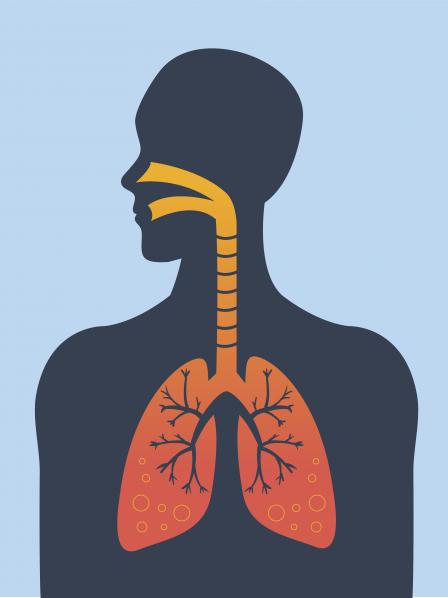Understanding Chemical Hazards in Occupational Settings: EPA’s HTTK R Package Update
Published June 22, 2020
 The latest version of the HTTK tool now includes an inhalation model that tells scientists more about the fate of a chemical that enters the body through the nose or mouth.EPA scientists have updated the High-Throughput Toxicokinetics (HTTK) R Package, a tool that includes models and databases that help researchers, risk assessors, and regulators better understand how chemicals interact with the body. The HTTK R Package allows users to determine where chemicals go in the body much faster than traditional methods. Unlike similar tools that exist in industry, EPA’s HTTK R Package is open source, meaning that it is free for public use. This is beneficial to both the EPA and interested public parties because it encourages collaboration. Additionally, the public improves the tool as they identify and report issues within the HTTK R Package.
The latest version of the HTTK tool now includes an inhalation model that tells scientists more about the fate of a chemical that enters the body through the nose or mouth.EPA scientists have updated the High-Throughput Toxicokinetics (HTTK) R Package, a tool that includes models and databases that help researchers, risk assessors, and regulators better understand how chemicals interact with the body. The HTTK R Package allows users to determine where chemicals go in the body much faster than traditional methods. Unlike similar tools that exist in industry, EPA’s HTTK R Package is open source, meaning that it is free for public use. This is beneficial to both the EPA and interested public parties because it encourages collaboration. Additionally, the public improves the tool as they identify and report issues within the HTTK R Package.
The HTTK tool also stands out from other similar tools because of its ability to screen many chemicals at once. Screening many chemicals at once makes it is easier to identify outliers and other issues that would likely go unnoticed when screening a single chemical (i.e. think, if a group of chemicals are known to react similarly in the body, then they should have similar toxicity predictions). The HTTK tool provides important information to risk assessors and policymakers much quicker than traditional models that focus on a single chemical’s toxicity.
EPA scientists developed the HTTK R Package in 2015 with the help of numerous EPA offices and partners. The latest version of the HTTK tool now includes an inhalation model that tells scientists more about the fate of a chemical that enters the body through the nose or mouth.
Inhalation models, which predict chemical toxicity from breathing, are relatively new in the realm of high-throughput testing. Previous chemical screening models focused on less volatile chemicals that may be more likely to enter the body orally. The new inhalation version of the HTTK R Package was created with help from scientists in the U.S. Air Force, and the addition fills an important gap in the understanding of how chemicals interact with the body.
The addition of the inhalation model will expand the benefits of the HTTK tool. Ideally, this information will lead to improved working conditions for manufacturing and factory workers across the nation. People that work in manufacturing and other factory jobs are exposed to more chemicals more often than the general population, like styrene, trichloroethylene, vinyl chloride, methyl ethyl ketone. Toxicokinetic inhalation models are essential for scientists to accurately predict exposure in these environments.
As their research continues, EPA scientists plan to address some of the limitations of the HTTK tool. New models are being developed describing absorption through the skin, exposure to aerosols (clouds of droplets), partial oral absorption, and human pregnancy. Meanwhile, EPA scientists and contractors continue to generate new data for hundreds of chemicals, so that they may be included in the HTTK R Package and the ToxCast screening library.
Learn More:
To learn more about the data used and produced by the HTTK R Package , check out EPA’s Rapid Chemical Exposure and Dose Research page.
To learn more about the work leading up to the HTTK R Package, check out the Scientific Milestones Leading to the HTTK R Package.
